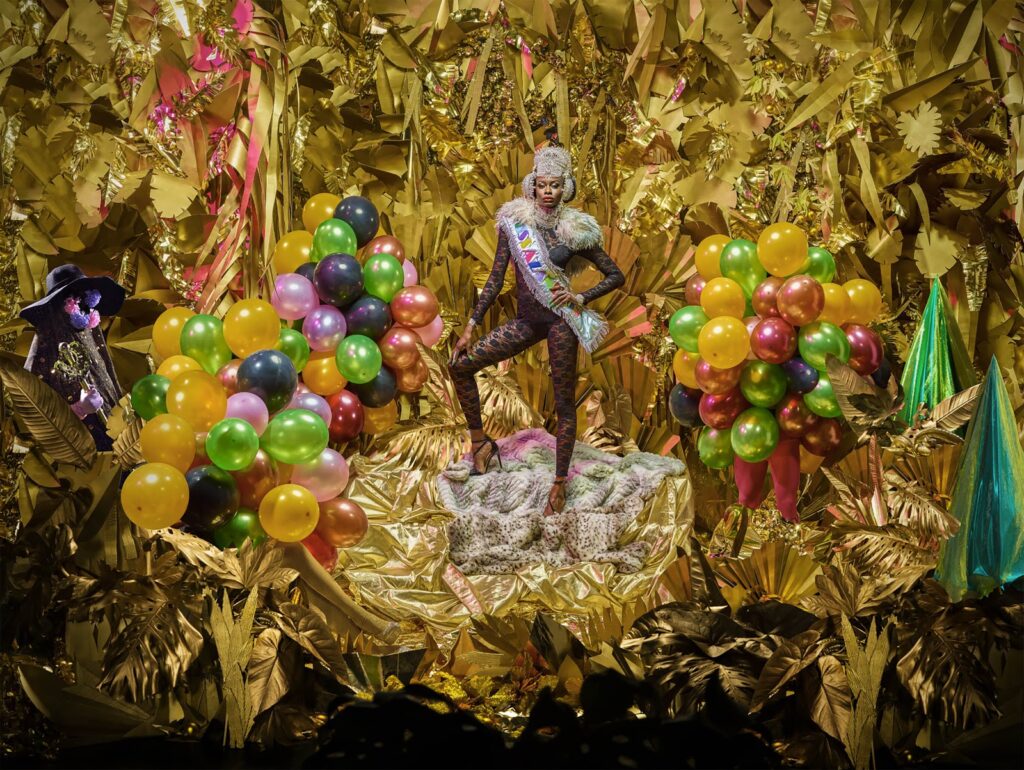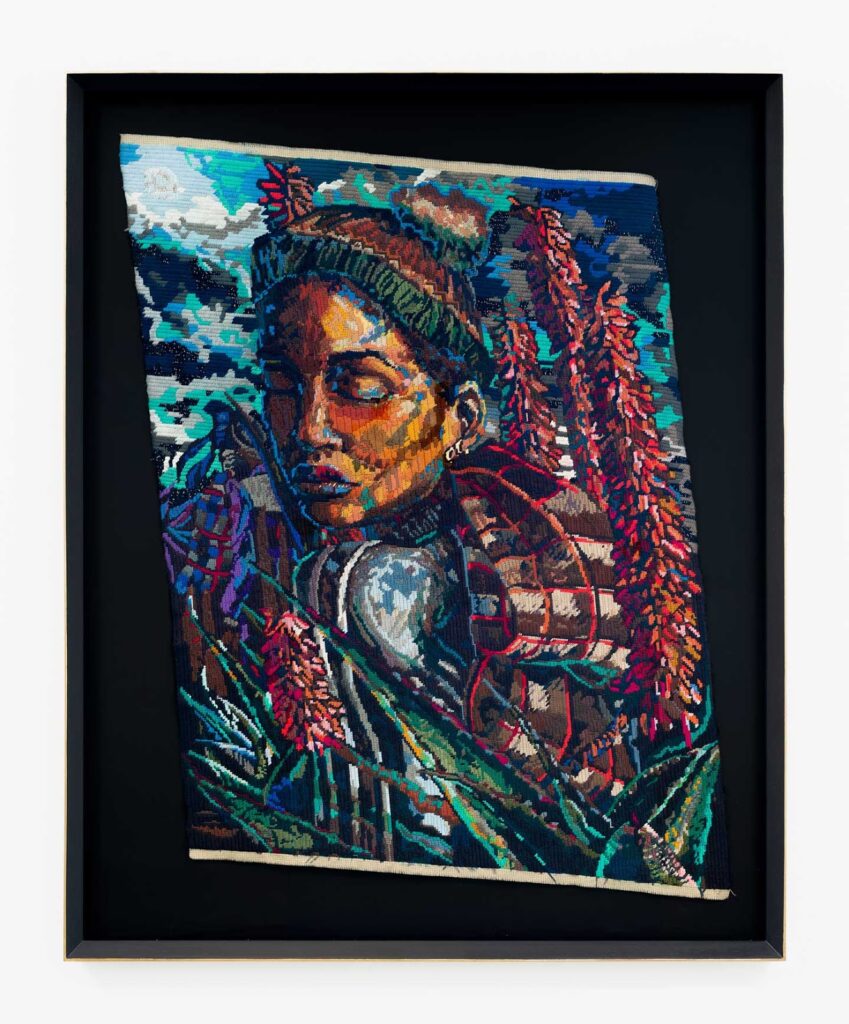Ms Congo digital video still (2009) (Athi-Patra Ruga)
Ms Congo
Ms Congo was born when I was living in Berea between 2004 and 2006. A big part of it was pushing back against the TinTin in the Congo book that was being reissued in about 2005. So I also had an opportunity to go to Kinshasa to perform that character, which, in South Africa, was unveiled at my first solo show at the Stevenson.
 Injibhabha, a response to xenophobia and a racist poster by the Swiss People’s Party (Athi-Patra Ruga)
Injibhabha, a response to xenophobia and a racist poster by the Swiss People’s Party (Athi-Patra Ruga)Injibhabha
In vernacular, “injibaba” means alopecia, which is hairline recession. It was a character made up into a couple of Afros, which was born in Switzerland as a response to quite a xenophobic, controversial poster by the Swiss People’s Party — which is quite rightwing, actually. It depicted a couple of white sheep kicking the black sheep off the Swiss confederacy flag. There was actually a poster and it set off a lot of hate crimes in Europe.
It was my first time in Europe and I was on a three-month residency. I did this Afro character as a way of pushing back. So I became this black sheep character that they were scared of. It highlights a European xenophobia under the guise of protecting utopia. That’s one of the hypocrisies of nationalism. You have to use armies and passports and concentration camps to keep people out.
 The death of Beiruth (2009) (Athi-Patra Ruga)
The death of Beiruth (2009) (Athi-Patra Ruga)Beiruth
Beiruth happens when I come back from Switzerland having experienced this awakening of European xenophobia in 2007, in the 21st fucking century. I come back and we experience these two things of the miniskirt attack and the xenophobic attacks. I used Beiruth as a way of coping. I think all of these are set off by mini traumas, or moments of devastating realisations. When all of these things happen, I think the only way that I can deal is to put on a costume and achieve that objective distance that won’t make me lose my mind, literally. That is a theme that runs through everything in the relatively earlier years.
 Miss Azania The Whole World Loves Her (Athi-Patra Ruga)
Miss Azania The Whole World Loves Her (Athi-Patra Ruga)The Future White Women of Azania
There was Ilulwane, which I did with synchronised swimmers in New York and Cape Town. After this came The Future White Woman of Azania, which then becomes The Future White Women of Azania. It became a parody of growing nationalism and a growing nation. Within Azania I start to perform various characters. I perform The Versatile Queen. I perform the Elder of Azania, who is representative of the beholder of stories and propagandists, basically.
 Inyanga yekhala (2020) in which Nomalizo Khwezi assumes a solemn pose, reflecting on her choices (Athi-Patra Ruga)
Inyanga yekhala (2020) in which Nomalizo Khwezi assumes a solemn pose, reflecting on her choices (Athi-Patra Ruga)Nomalizo Khwezi
Now, I am embodying two characters in the recent body of work. Nomalizo Khwezi, who is our main protagonist in the tapestries, also embodying Malibuye Khwezi. It revolves around the idea of true names.
In my culture, whether it is Bhaca or Xhosa, you are marking a moment in history, or predicting the future. Or trying to make sense of things. So the name becomes quite strong. Something to live up to in myth or something to betray.
Athi is a shortening of “Athenkosi”, which means “we are always grateful”. We give thanks.
Khwezi is also the morning star, which is one of my favourite sights in the morning. I wake up and I go for a jog and I look at it and I feel so connected to the land, whether be it Cape Town in the urban form or Hogsback, where me and my partner live.